Like most women, I have struggled with hormone related issues at different times in my life. When I heard about using ground seeds as a natural way to support fluctuating hormones, I was intrigued. Now, I’m sharing everything I’ve learned about seed cycling for hormone balance with you below.
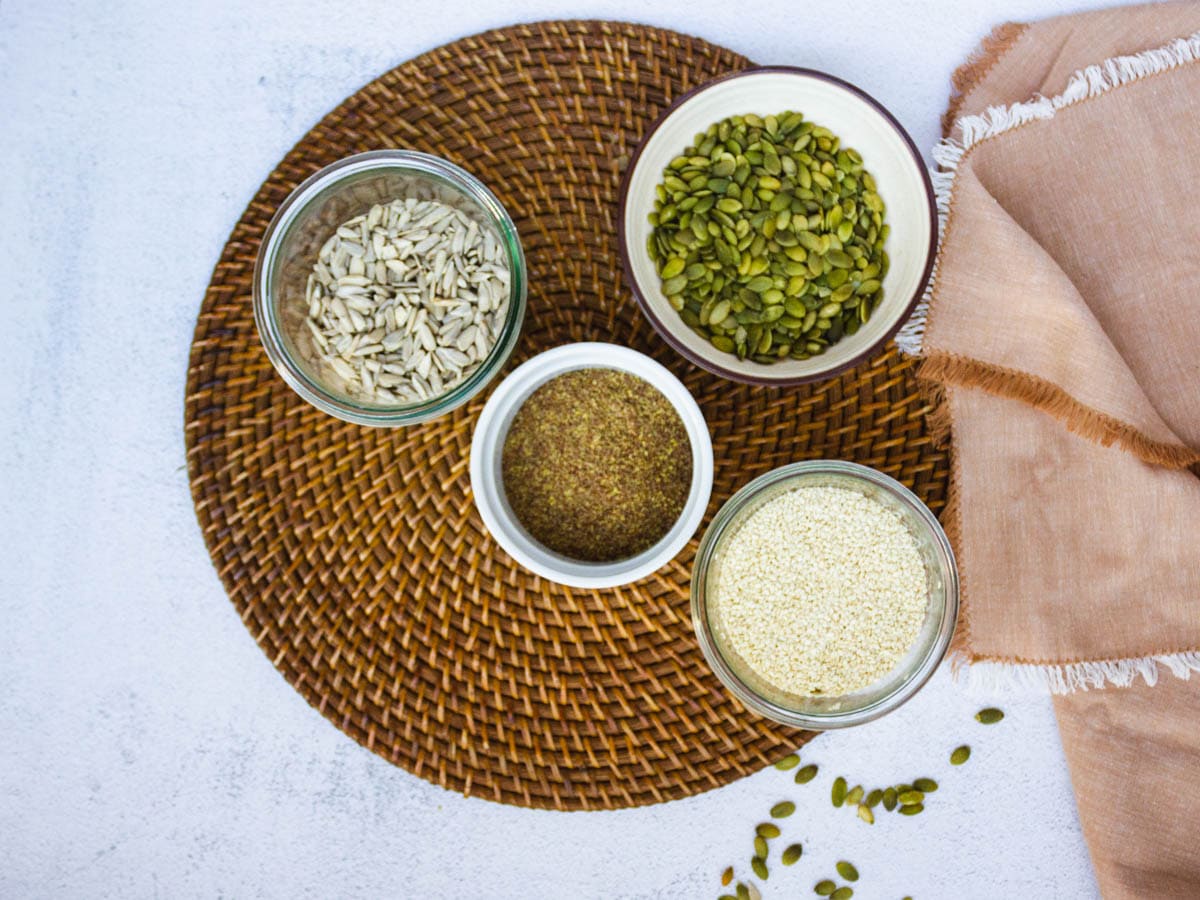
Seed cycling is an alternative medicine practice believed to balance hormones by regulating estrogen in the first half of the menstrual cycle and progesterone in the second half. This balance is achieved by supplementing four seeds at different points of the cycle: pumpkin, flax, sunflower and sesame.
Women’s hormones are complex and greatly affected by everything from exercise to diet to sleep to stress to health conditions to environmental toxins. These stressors can result in symptoms like acne, weight gain, irregular cycles and even infertility. While we’ve traditionally turned to solutions like birth control to regulate symptoms, many of us are looking for a more natural remedy. That’s where seed cycling comes in.
What is seed cycling?
Seed cycling, also called seed rotation, is a natural way of balancing hormones. The basic idea is that specific seeds can promote or inhibit the development of the hormones estrogen and progesterone at different points in your menstrual cycle.
Hormones in a normal cycle:
To understand this, you first need to understand the two primary phases of your cycle.
The Follicular Phase:
- Day 1 - 14
- The period of time between menstruation and ovulation
- Estrogen is produced as eggs reach maturation
- Follicle-stimulating hormone (FSH) and Luteinizing hormone (LH) increases just before ovulation
The Luteal Phase:
- Day 14 - 28
- The period of time between ovulation and menstruation
- Estrogen levels drop just after ovulation
- Once an egg has been released, the progesterone levels increase to support conception and implantation. This decreases again before your next cycle begins, unless an implantation occurs
To sum it up: when your hormones are behaving as they should, your estrogen is rising during the follicular phase and decreasing during the luteal phase. Your progesterone levels are rising during the luteal phase and decreasing as you approach your next follicular phase. If your hormones are out of whack, you’ll see symptoms like PMS, cramps, acne, and irregular cycles among many others.
Don’t worry if you don’t have a 28 day menstrual cycle. It’s best to sync the seeds you eat with your own unique cycle. Just adjust the number of days to match your own body's needs. I highly recommend using an app like Flo or Clue for ovulation tracking.
Now that you know all about your cycle, here’s what you need to know about using seeds to promote hormone balance.
How to start seed cycling for hormone balance:
It’s all about syncing the correct seeds with each phase of your menstrual cycle.
Seeds supplemented in the follicular phase:
- 1 tablespoon of ground flax seeds per day
- 1 tablespoon of ground pumpkin seeds per day
Seeds supplemented in the luteal phase:
- 1 tablespoon of ground sunflower seeds per day
- 1 tablespoon of ground sesame seeds per day
Feel free to print or pin this seed cycling chart for an easy reference.
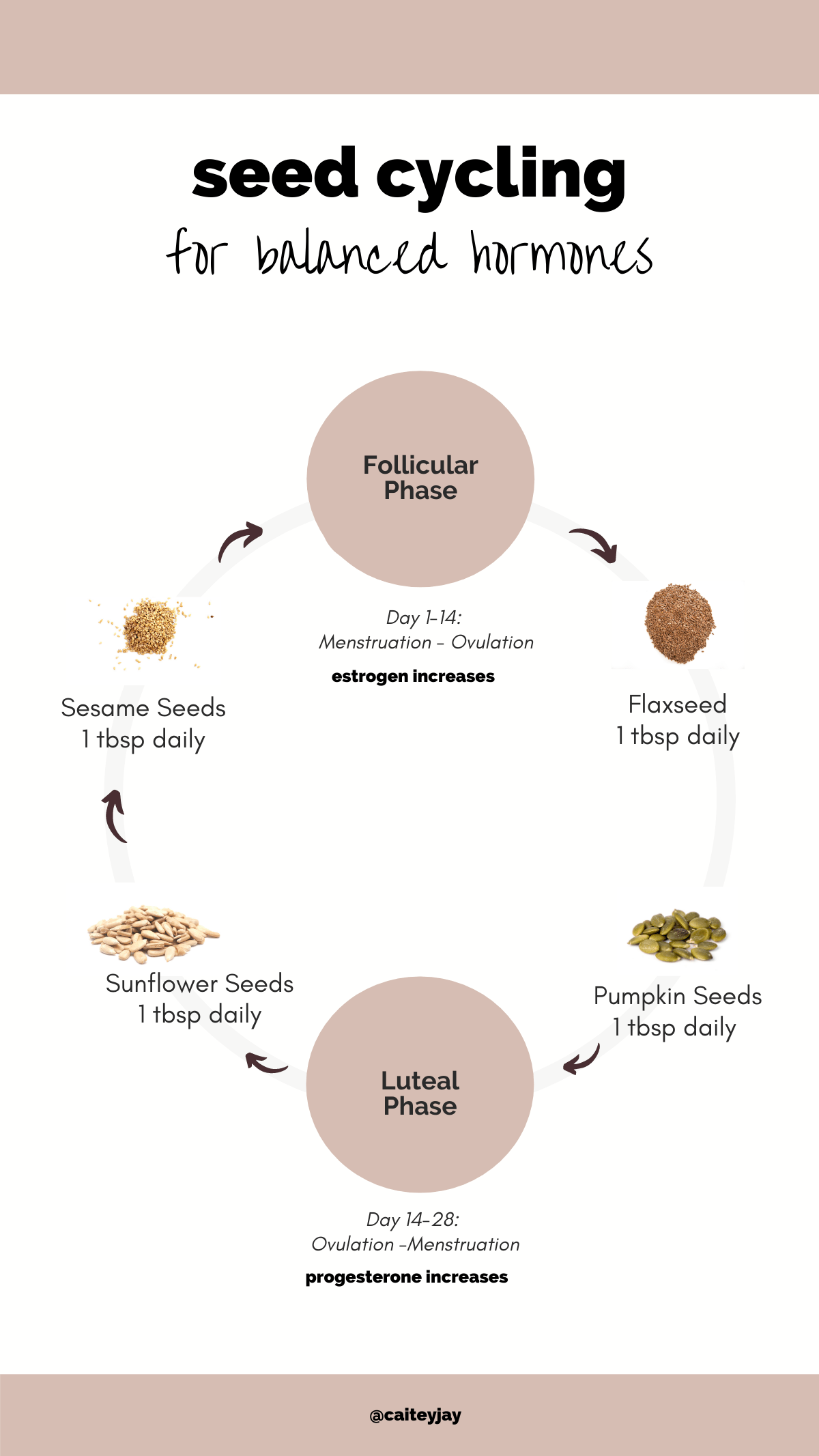
Things to know before you start seed cycling:
Not just any old seed will do. Be sure to follow this checklist when getting ready to seed cycle.
- Grind your seeds: Whole seeds can’t break down completely during digestion. Grinding them into a powder allows your gut to absorb more nutrients from the seeds. You can do this easily with a coffee or spice grinder. I usually grind a batch at a time and store it in the refrigerator or freezer.
- Use raw seeds: Unroasted, unsalted seeds are best. Their nutrients aren't altered by the roasting process, so your body will get more benefit out of seeds in this state.
- Buy organic if possible: While organic may be more expensive, it’s important to limit exposure to pesticides if you're experiencing hormone imbalances. These chemicals are endocrine disruptors that can greatly impact your hormones.
- Store in the refrigerator: All nuts and seeds should be stored in the refrigerator, or at the very least, in a cool, dark place. That's because the unsaturated fats will go rancid quickly when exposed to warmth and sunlight.
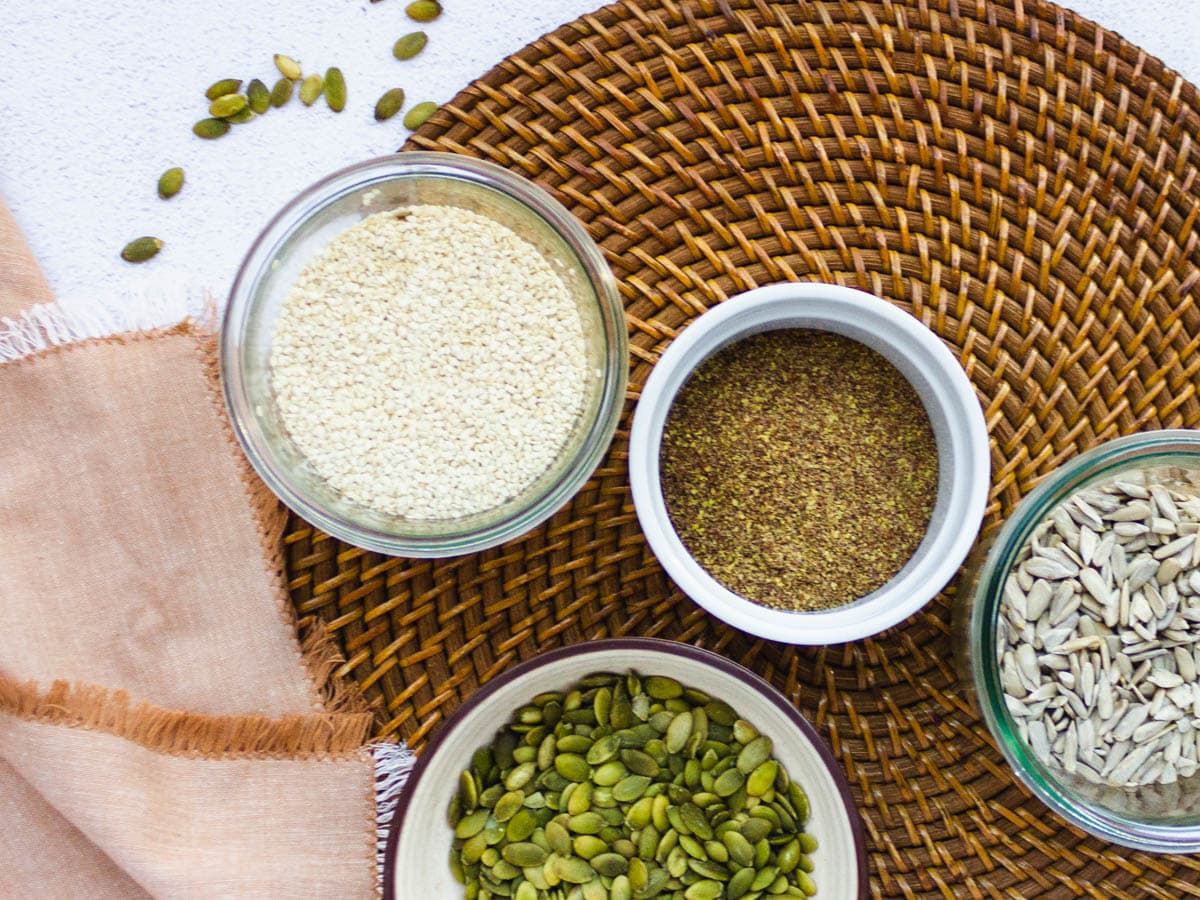
How to incorporate seeds into your daily routine:
While the seeds can be eaten alone, it’s more enjoyable to add them into your daily eating routine. These tiny, nutritious powerhouses are easy to add to a variety of dishes. Sharing a few of my favourite ways below with links to recipes that include these seeds.
- Sprinkle on top of bowls, salads, soups or toast
- Use within energy balls, granola bars and homemade granola
- Add them into smoothies, yogurt bowls or oatmeal
- Make your own seed butters.
Here are a few recipes you could incorporate seeds in:
What is the science behind seed cycling?
To be truthful, there is limited research and a lack of scientific study on the link between seed cycling and improved hormonal health. The studies that do exist don’t prove causation, but suggest a correlation between seed supplementation and improved hormonal health.
That said, because seed cycling has been prescribed by alternative health practitioners for many years, there is strong anecdotal evidence that this practice has helped women suffering from a variety of hormone imbalance symptoms.
Furthermore, there’s very little risk to ingesting seeds daily. In fact, there are more likely health benefits that come from adopting this practice. All four seeds are filled with dietary fibre, protein, healthy fats, and a wide variety of minerals and vitamins. They’ve been shown to promote good reproductive health, help us manage cholesterol and blood sugar, protect against breast cancer, and reduce inflammation.
With that in mind, seeds are a go.
But, here’s why alternative practitioners believe pumpkin, sunflower, flax and sesame seeds are the ticket to better reproductive health.
The benefits of flax and pumpkin seeds in the Follicular Phase:
During the follicular phase, it’s recommended to eat 1 tablespoon of flaxseeds and pumpkin seeds per day. Both seeds are rich in phytoestrogens, a plant compound that mimics estrogen in the body. These phytoestrogens are called lignans and are thought to help improve our estrogen levels while also binding to excess estrogen.
Pumpkin seeds are also high in zinc. This mineral is thought to support progesterone production that’s needed as you move toward the luteal phase of your cycle. Zinc also ultimately helps stimulate the uterus to thicken and prepare for implantation.
The benefit of sunflower and sesame seeds in the Luteal Phase:
During the luteal phase, it’s recommended to eat 1 tablespoon of sunflower and sesame seeds per day. This is because both seeds contain high levels of zinc, which helps boost the production of progesterone.
Sesame seeds are also high in lignans, that as you know, block excess estrogen in the body.
Sunflower seeds are rich in zinc and vitamin E, which both support progesterone production. They also contain selenium, that helps cleanse the liver of excess estrogen.
How long will it take to see results?
It can take up to three months to start to seeing shifts in your symptoms and realizing the benefits of seed cycling. It takes time for your body to adjust, adapt and react.
I suggest using a journal to track your hormonal symptoms. That way you can notice shifts and determine if seed cycling is the right natural remedy for you.
If it’s working, you might want to keep it up for a lifetime. It’s an easy, natural way to support hormonal health that can easily become second nature.
If you've tried seed cycling, please let me know your results in the comments below. We can all learn from each other's experiences.


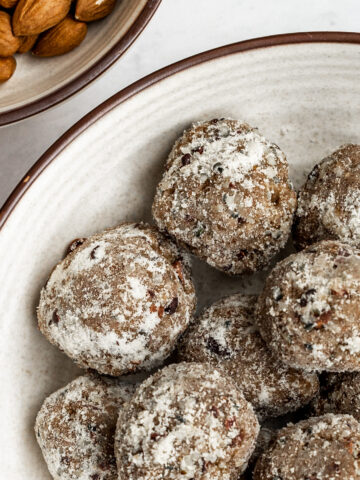


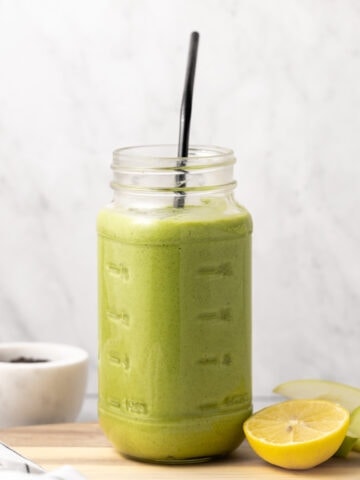
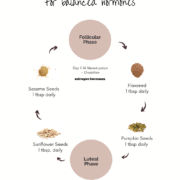
Leave a comment!